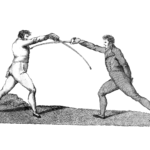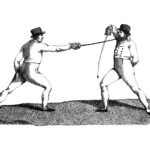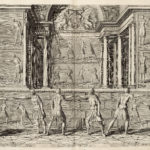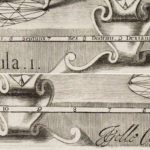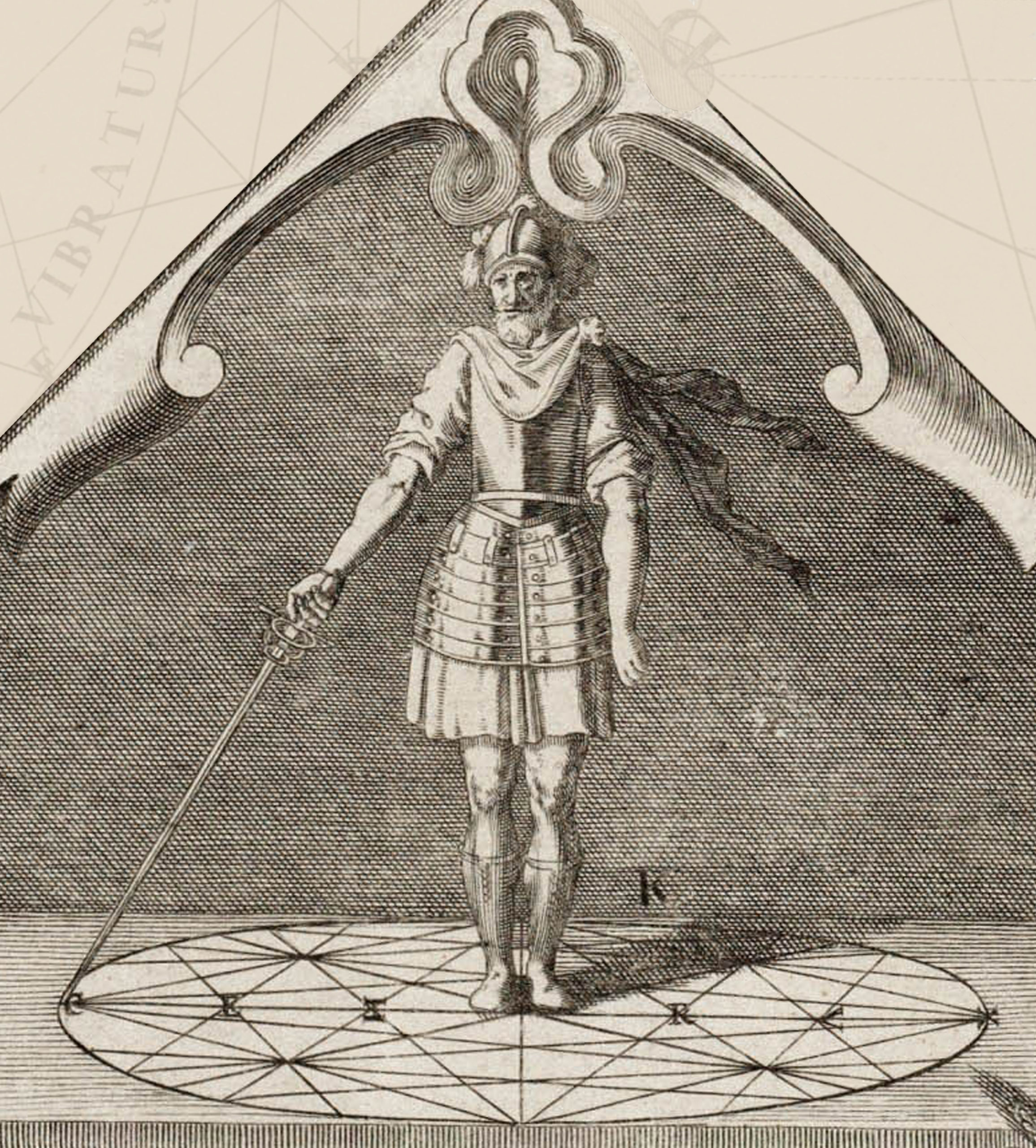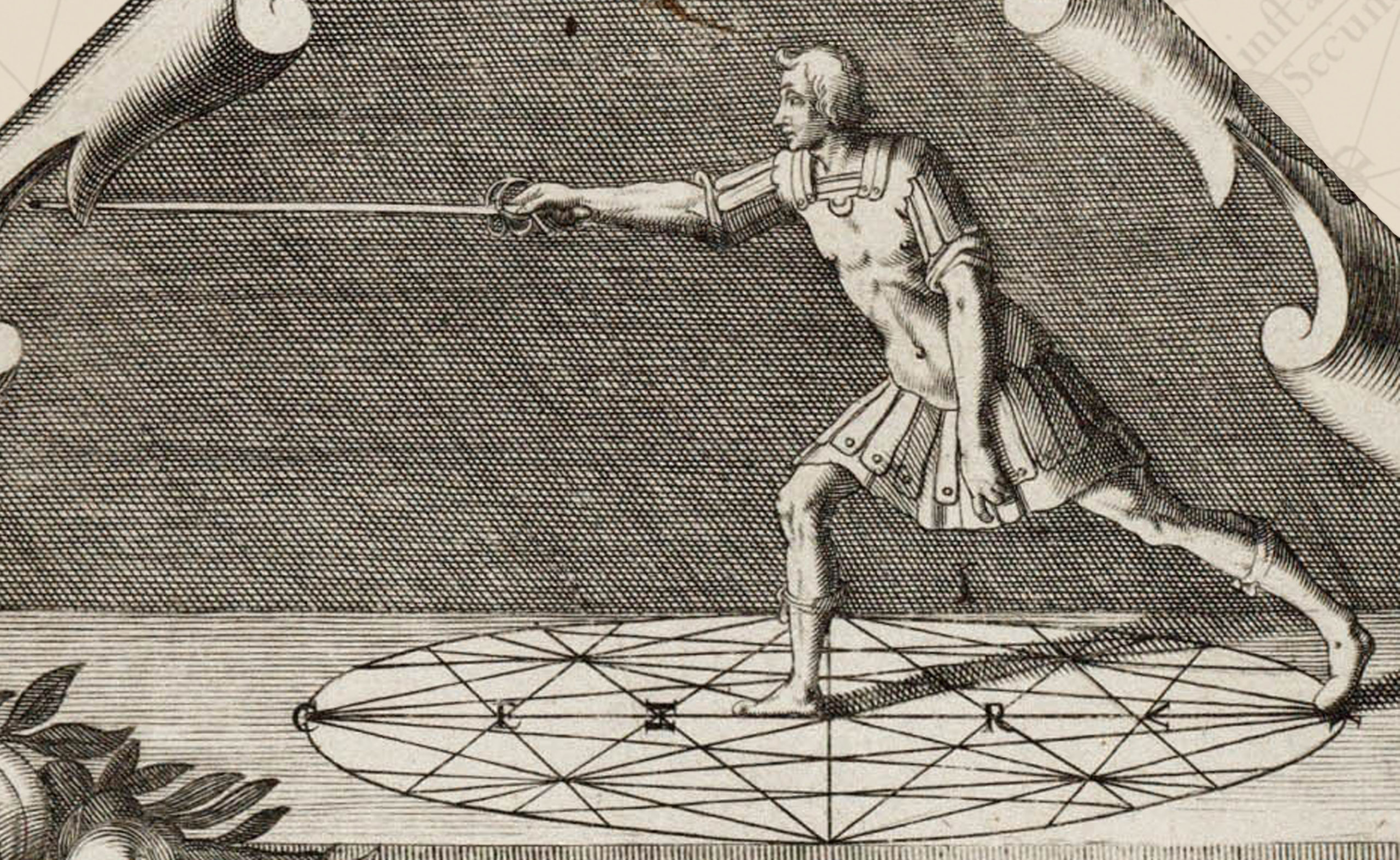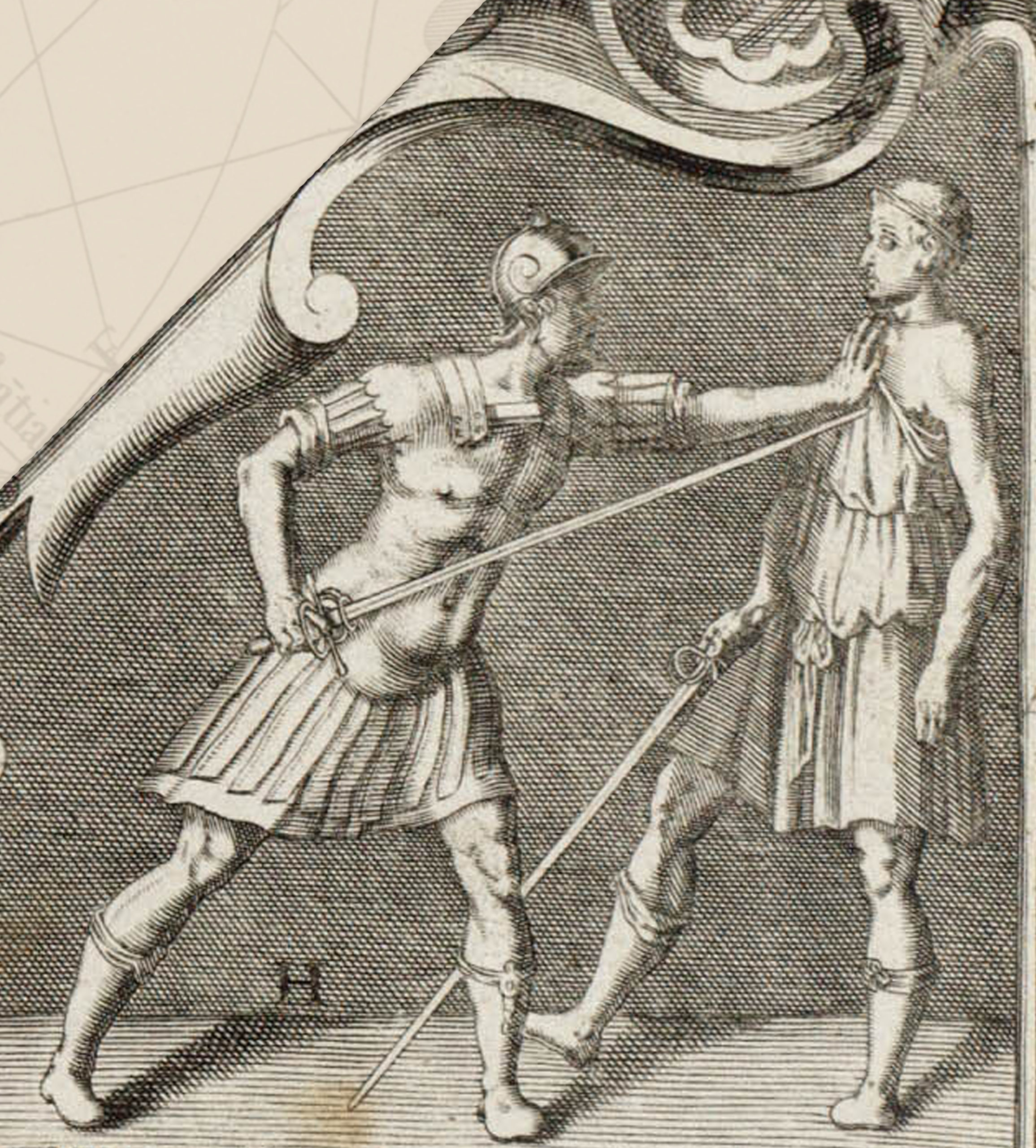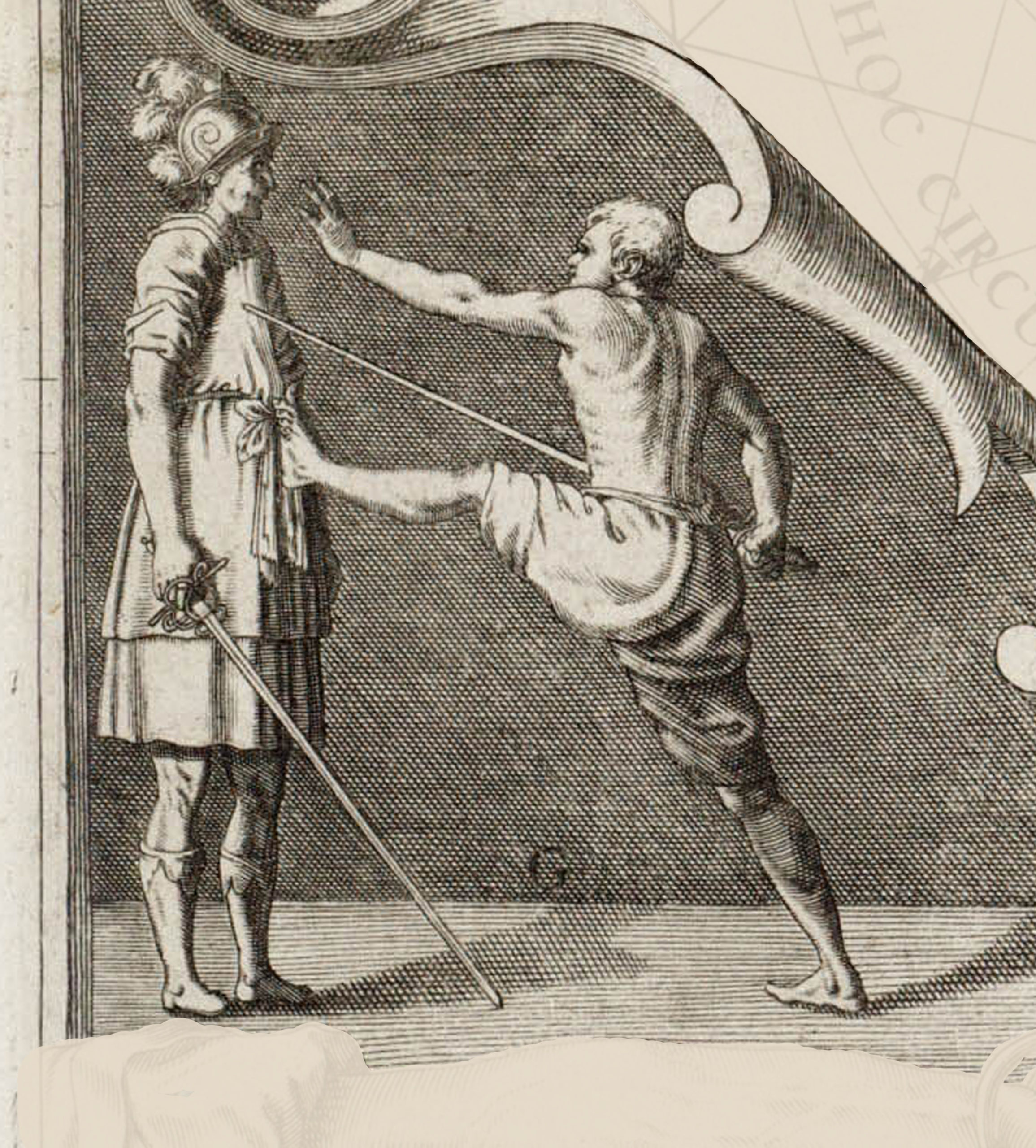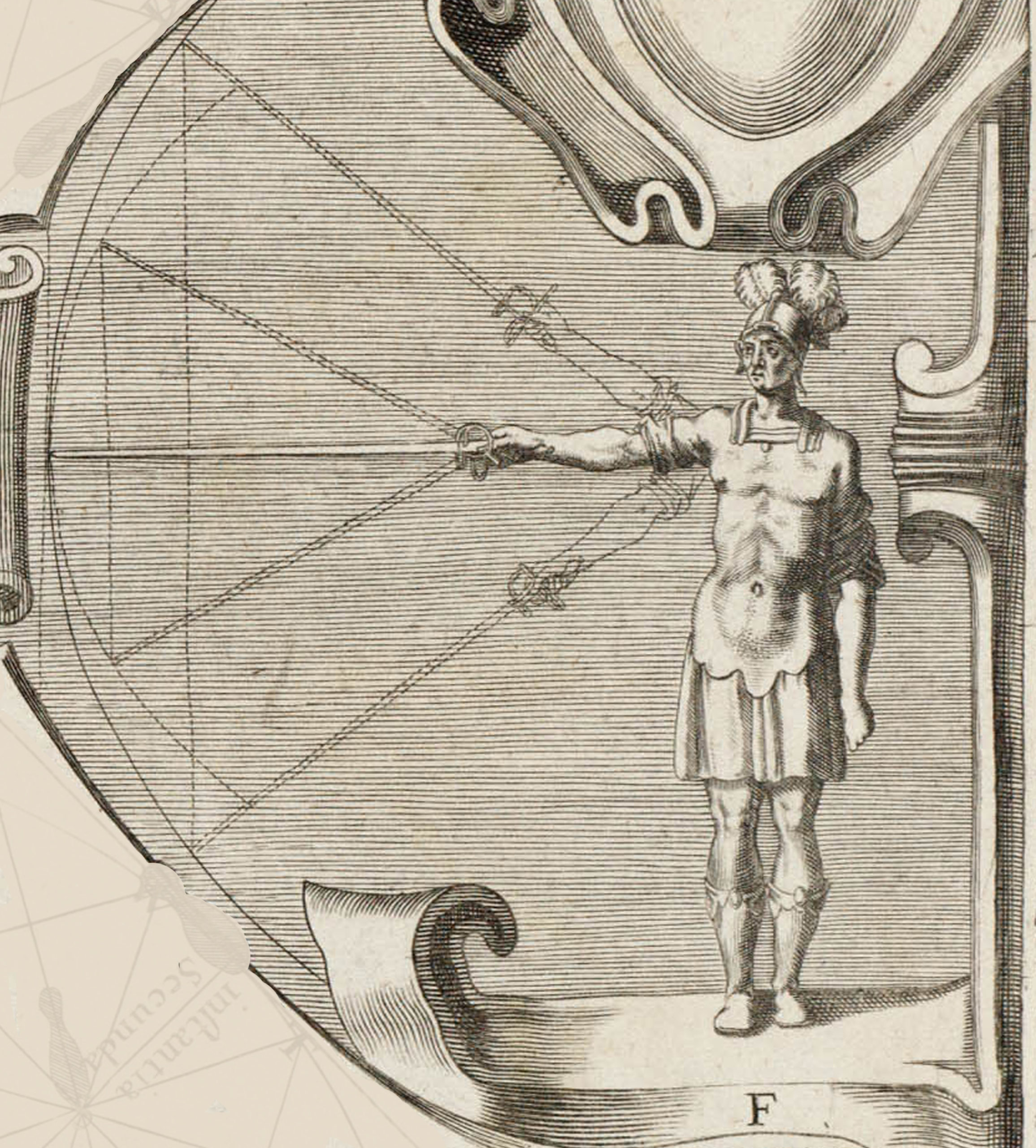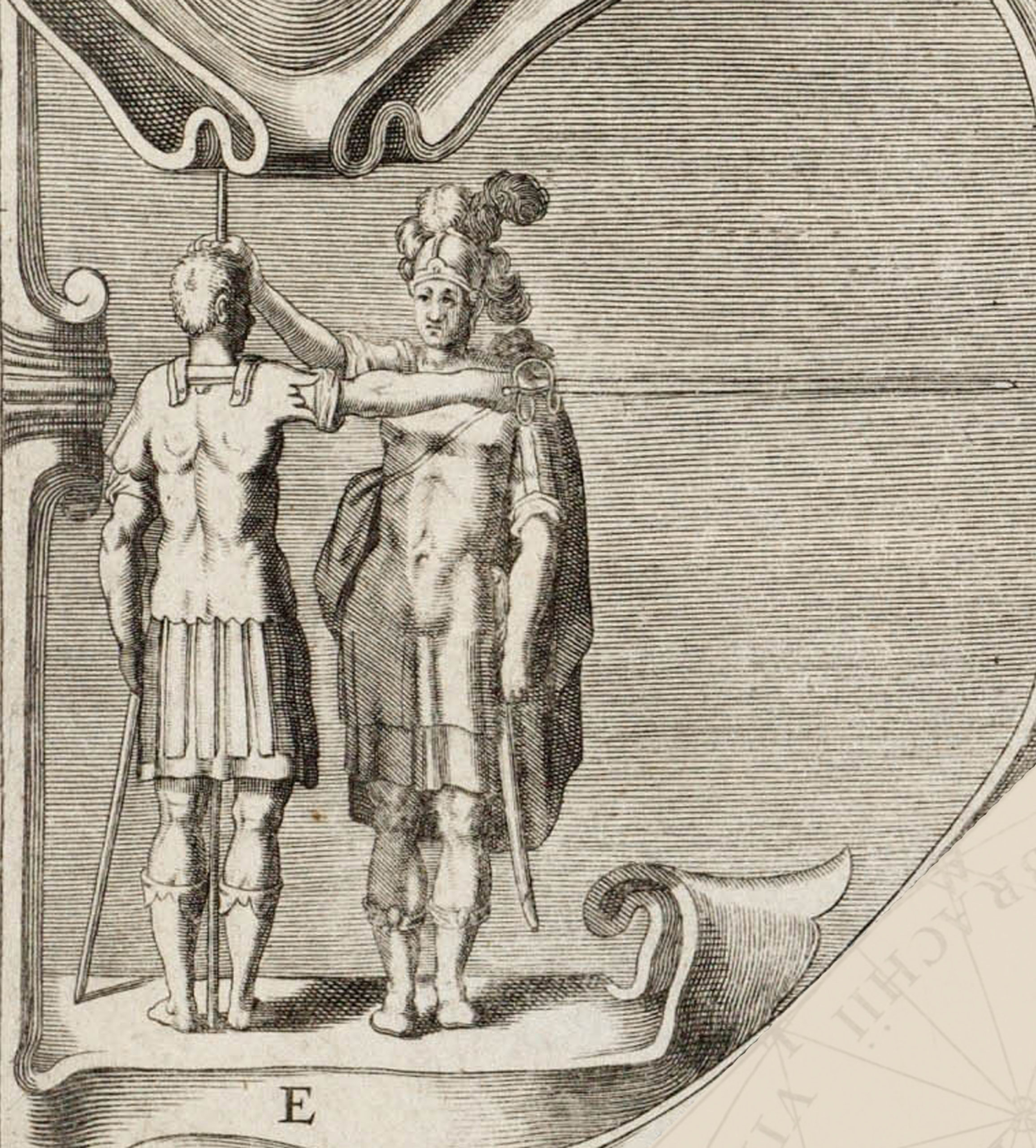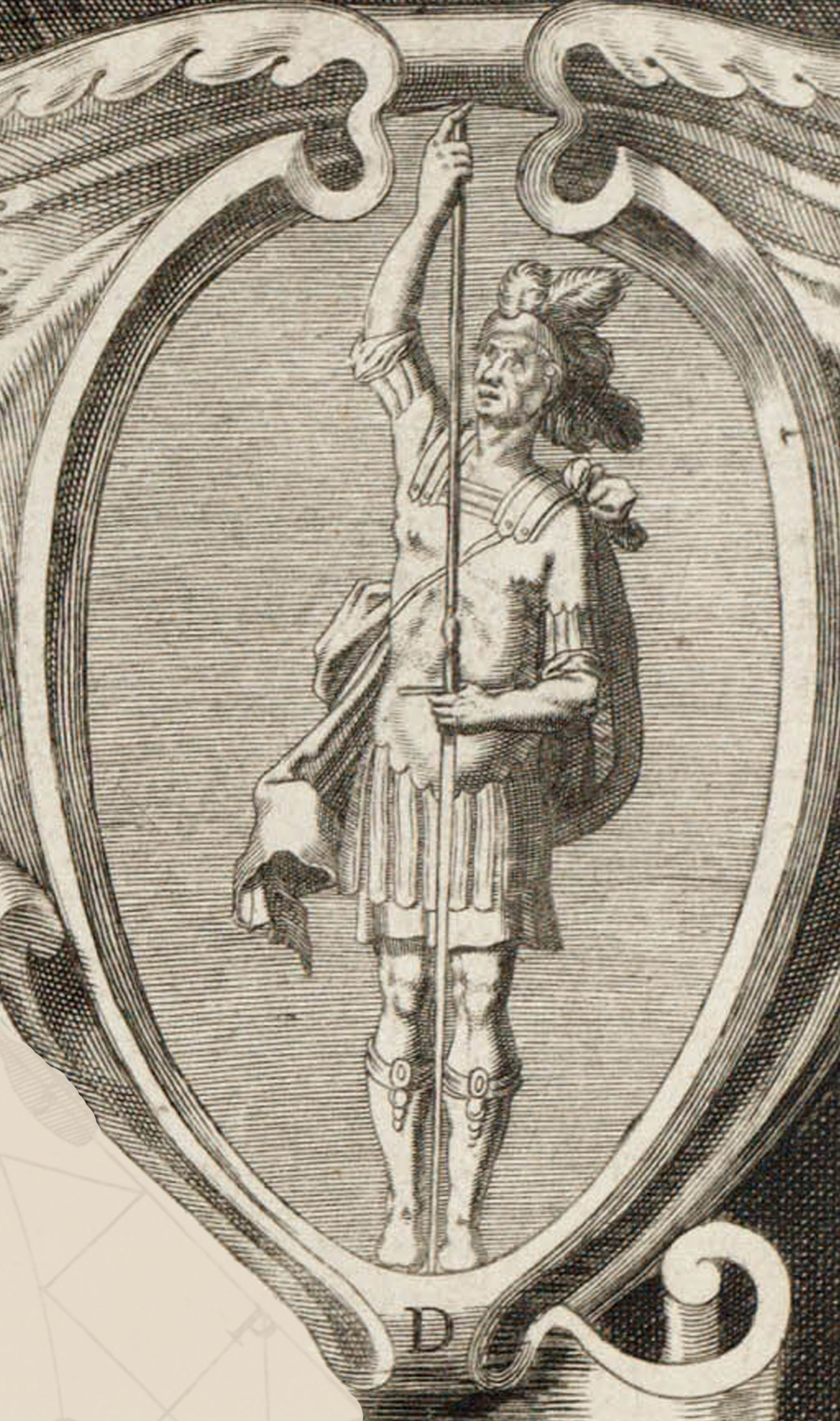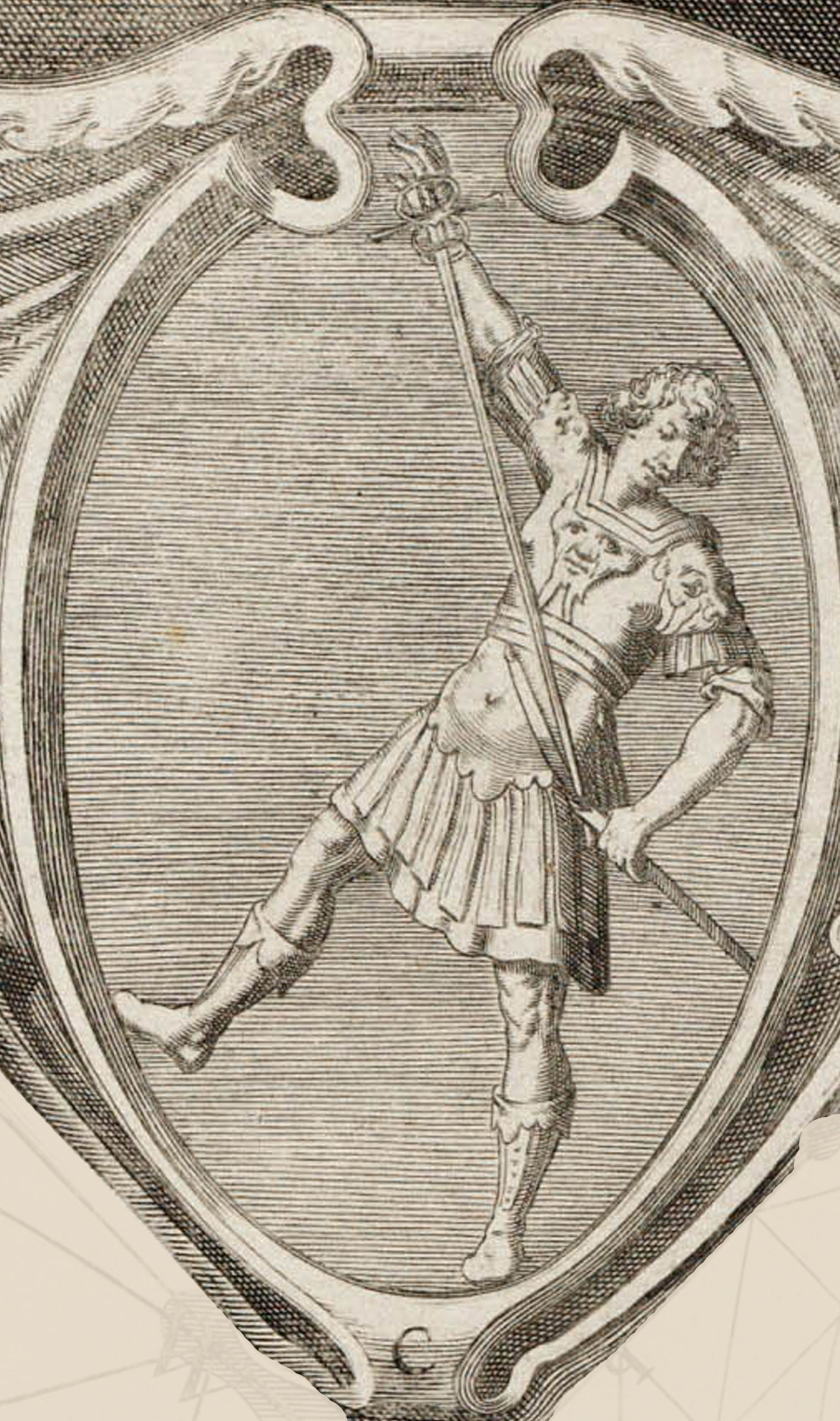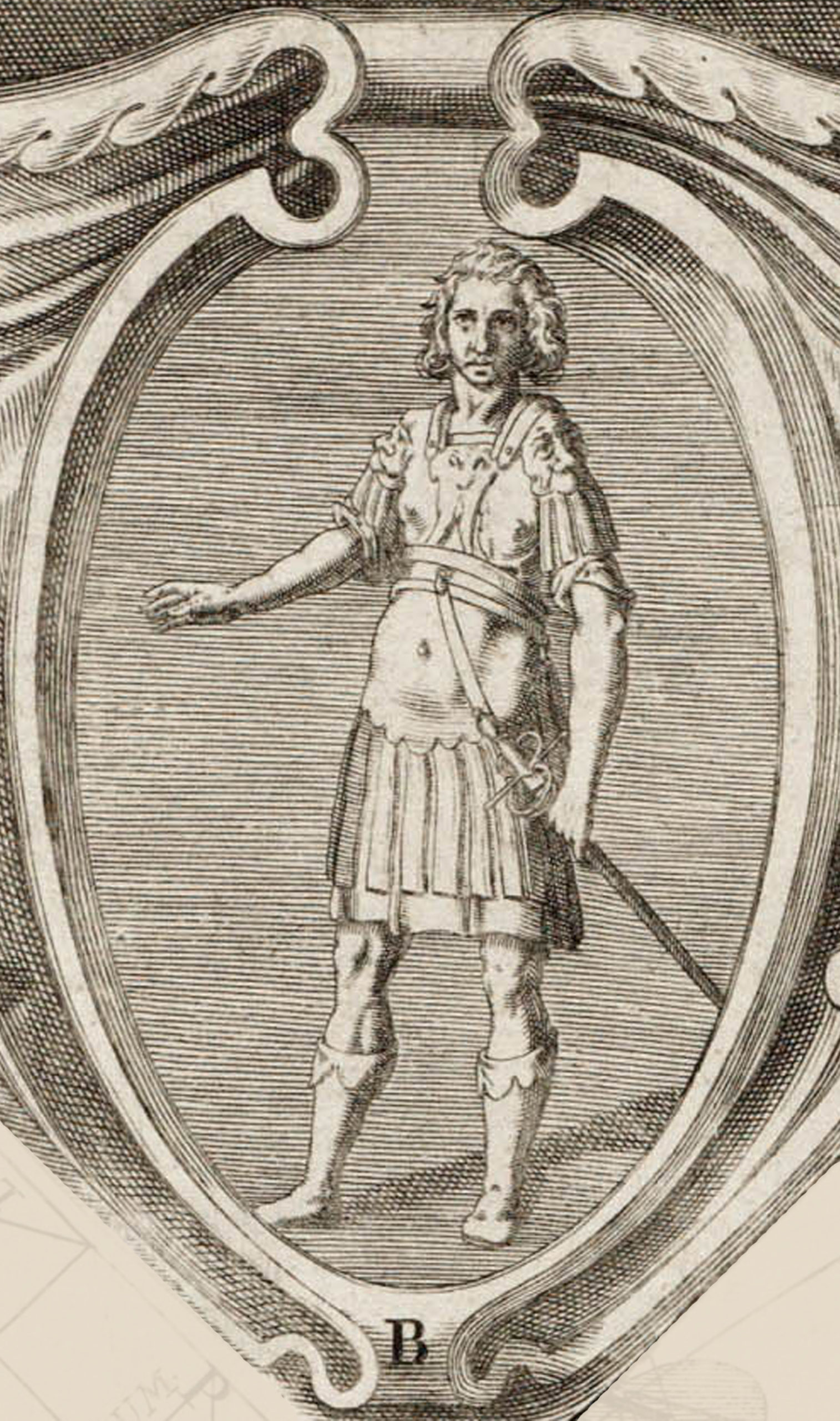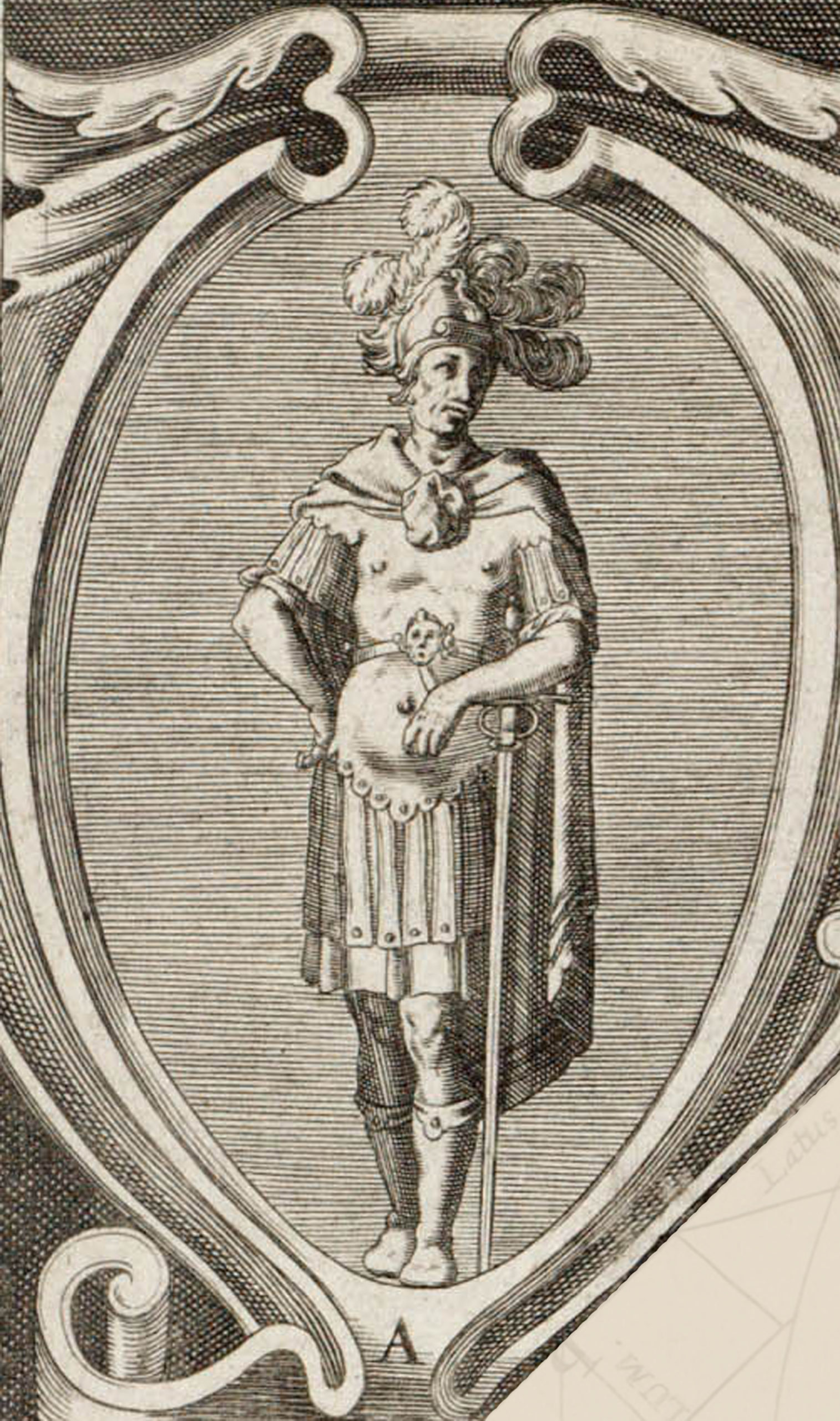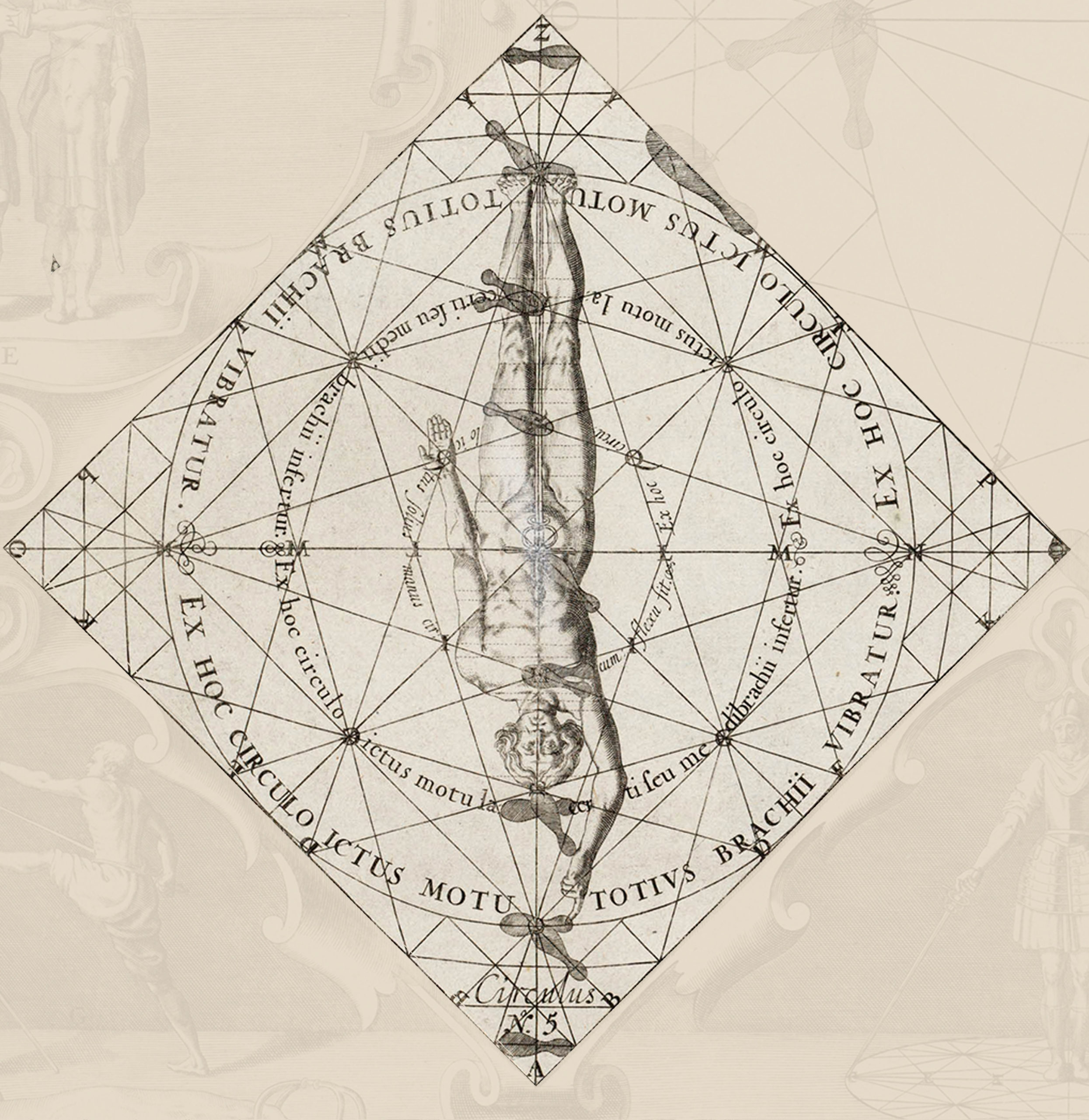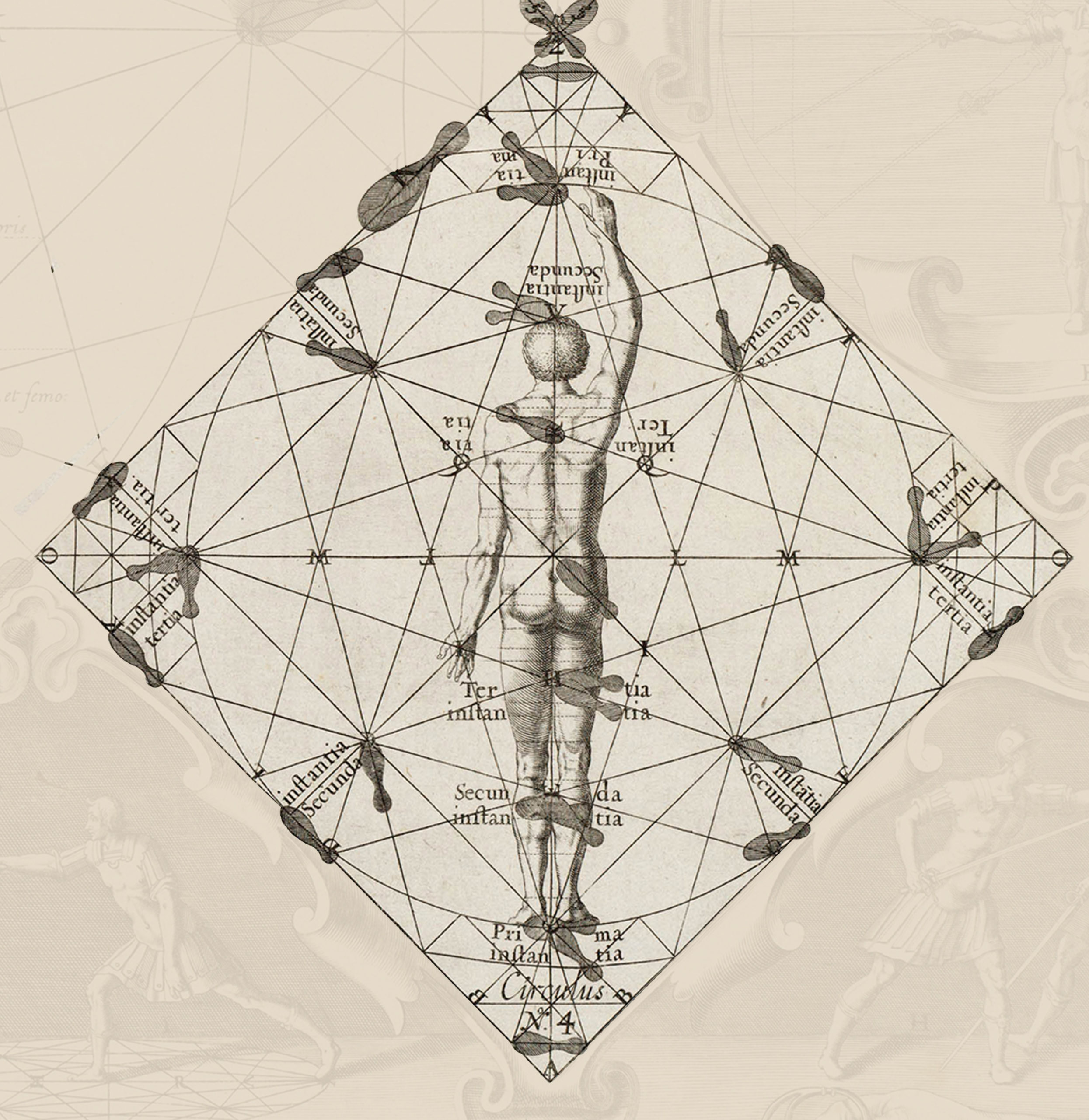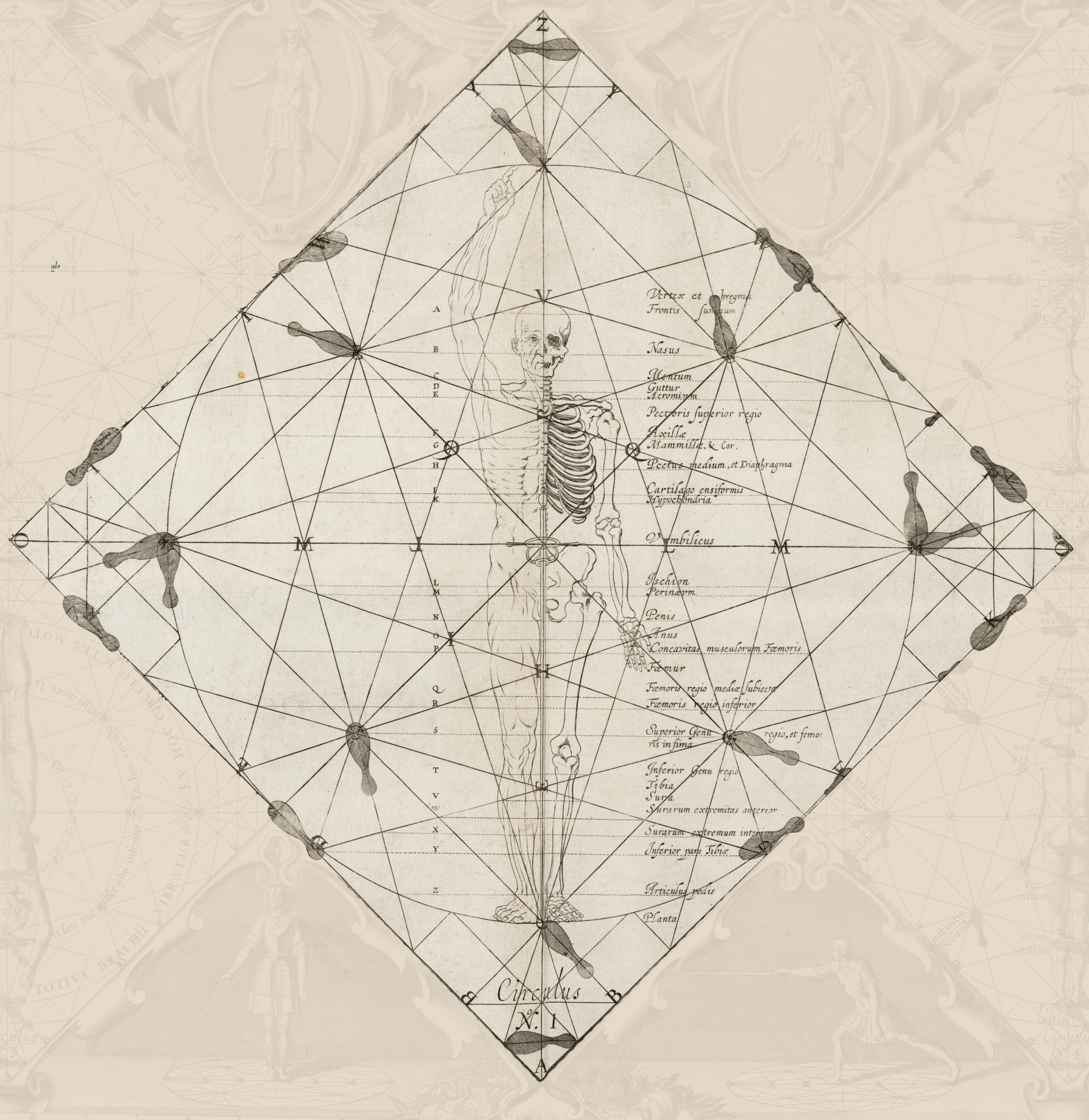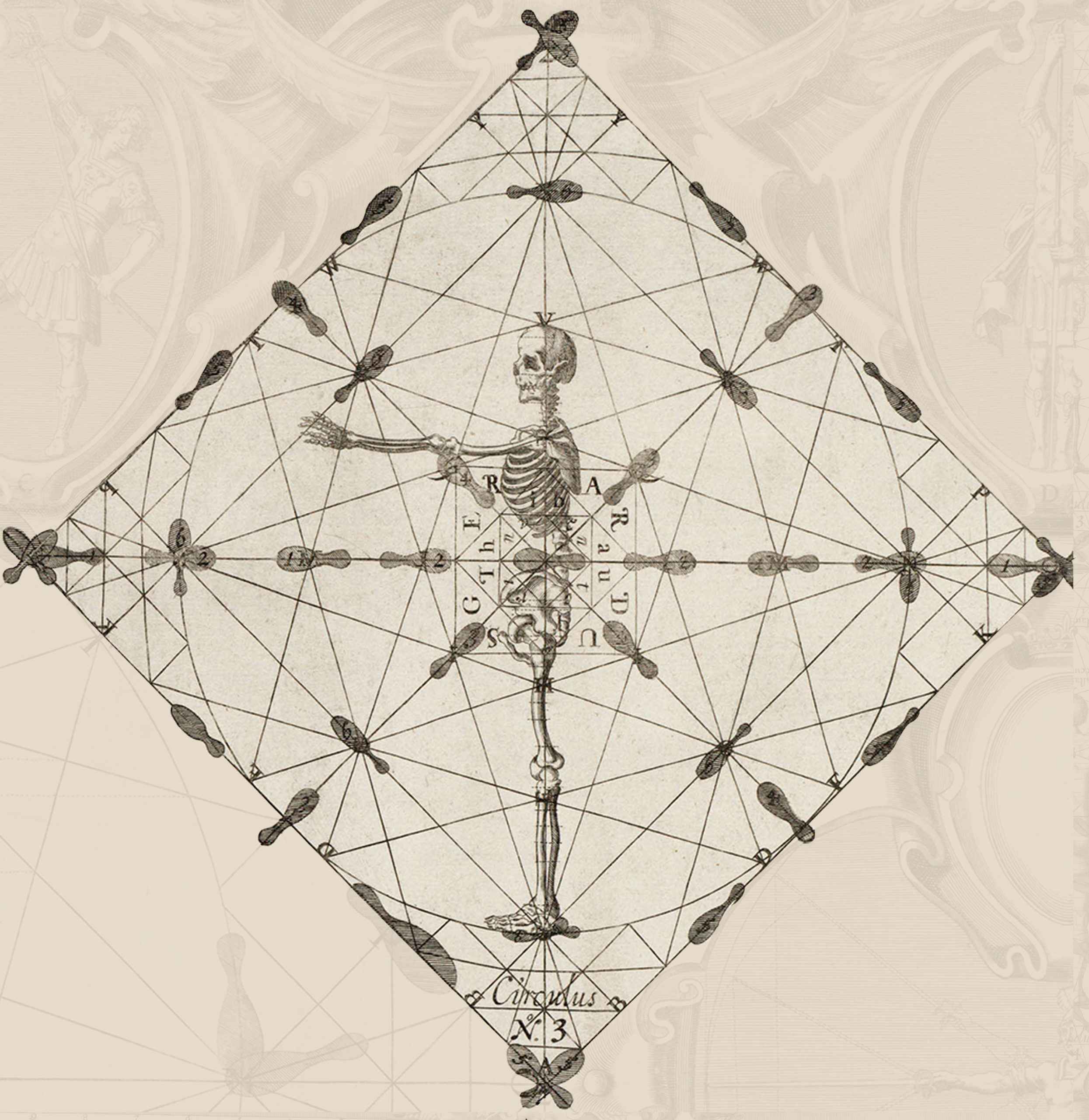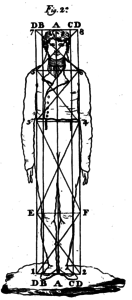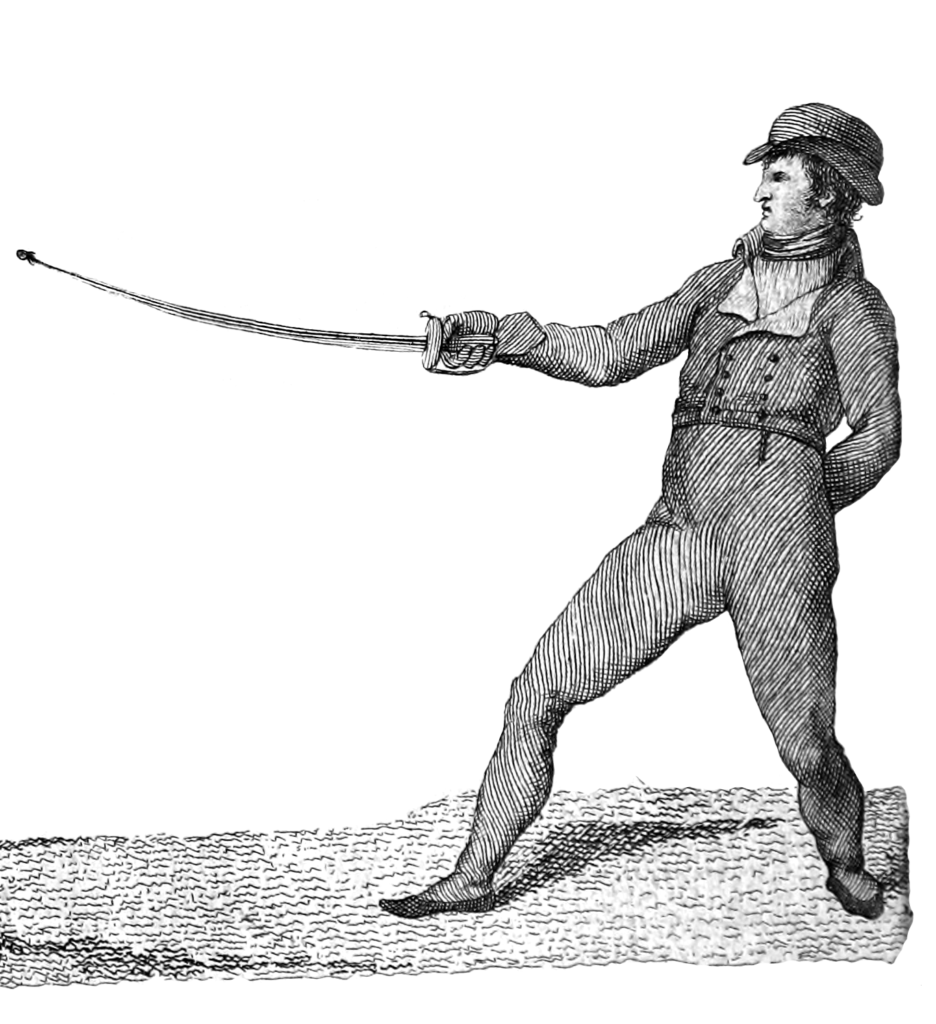463. Regardless of this treatise being very short compared to how much could be added to each chapter, I have proposed not to leave the limits of a purely elementary work. It is not too small, I believe, to be a sufficient handbook for teachers, because these will not miss any operation susceptible to the skill of the sabre, that they do not find treated, even in summary, but with the best method, and so that they only reduce the work to broadening the doctrines to adapt them to the ability of the student. In which case, it remains to reduce to practice everything that is explained, there is lacking for the fulfillment of my desires to entrust them to seek to impose on students very deeply the nature, variation, and measure of the compasses, without moving on before they are promptly executed and arranged. The same with the division of the body into planes. With equal care to execute with ease and alacrity the movements of the arm and sabre, the formation of all the removals, for which it is necessary for the teacher to vary the attacks to all of the points, to give with this disposition so that the student also varies all of the removals, and passes from one to another with ease and success, whether it be exercised on firm feet or accompanied by advances, withdrawals, or motions on the center. It is equally necessary that the student is subjected to the voice of the teacher to accompany the removals with the advances and withdrawals, and to their compasses to combine them with the motions. But, in the last case, when the teacher leaves the line of the diameter by one or the other side in the execution of a second shot, the student must make the removal by seeking at the same time with the left foot, the opposite diagonal to the side where the exit was made so that their two feet are placed on a straight line, which begins from the right of the teacher and will oppose ahead of the right collateral. This is a circumstance that must be met in any time of a defensive battle when the enemy moves away from the line*. The teacher must bear in mind that it is very dangerous to sustain a battle that exceeds three shots in the offensive measure and, therefore, he must habituate the student that at the least, the third removal is accompanied by a withdrawal, except that this does not apply in the case of applying the doctrine of conclusions that are carried out while advancing. With the exact observance and tenacious repetition of the exposed methods, one can manage to exercise the student until the degree of perfection in the defensive parts that, without dispute, must without dispute, be the principal object of a prudent master.
*When doing a removal with the intent to conclude, always oppose the vertical of the chest as it is explained in its place, and serving as an exception.

464. The lessons should be given with real sabres and not with rods or sticks as is customary in the academies of some kingdoms of Europe, since it is always conducive that the students acquire from the first, the habit of handling the instrument that one day will serve as their defense. It gives strength to the arm to be able, without much sorrow, to prolong the battles much more than they would if their wrist, trained to the lightness of the rods, suddenly found a weapon twice as heavy as those.
465. The curvature of the blade is so necessary in the sabre, as from it depends many of its operations. And, since this is not easy to achieve in batons, it is a new obstacle to its use. To these reasons could be added many others, but suffice for now the experience of those students who have greatly perfected this method.
466. The sabres best adapted for this object are the common blades, untempered by fire, the edge reduced by means of filing. Its length and curvature will be arranged to the doctrine of these elements. On the point is perfectly riveted a plate of iron the diameter of a half paseta, dressed with a lining of suede. On this is placed a little wool and, over it, two linings of suede, fastened with a strong cord, all of this made to form a small cushion in order to prevent the damage that the achievement of a thrust would cause. The guard must be strong and quite ample, so that the armed hand with a glove does not encounter oppression and difficulty for its free handling. See Plate 13, Figure 1.
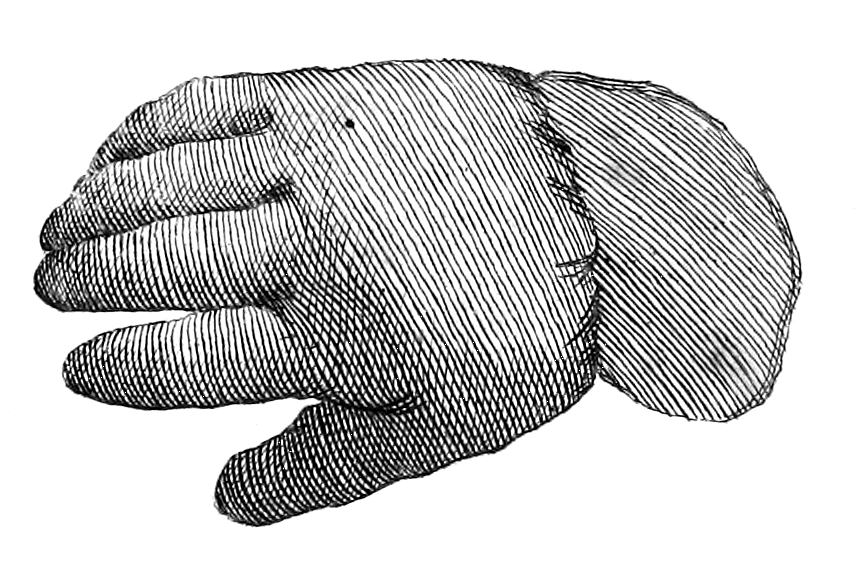
467. The glove that will be used must be of suede, sufficiently ample, and the outside covered with a cushion full of wool or cotton, as shown in figure 2 of the plate cited, being free without it on the part that corresponds to the palm of the hand. The teacher, like the student, will use this glove.
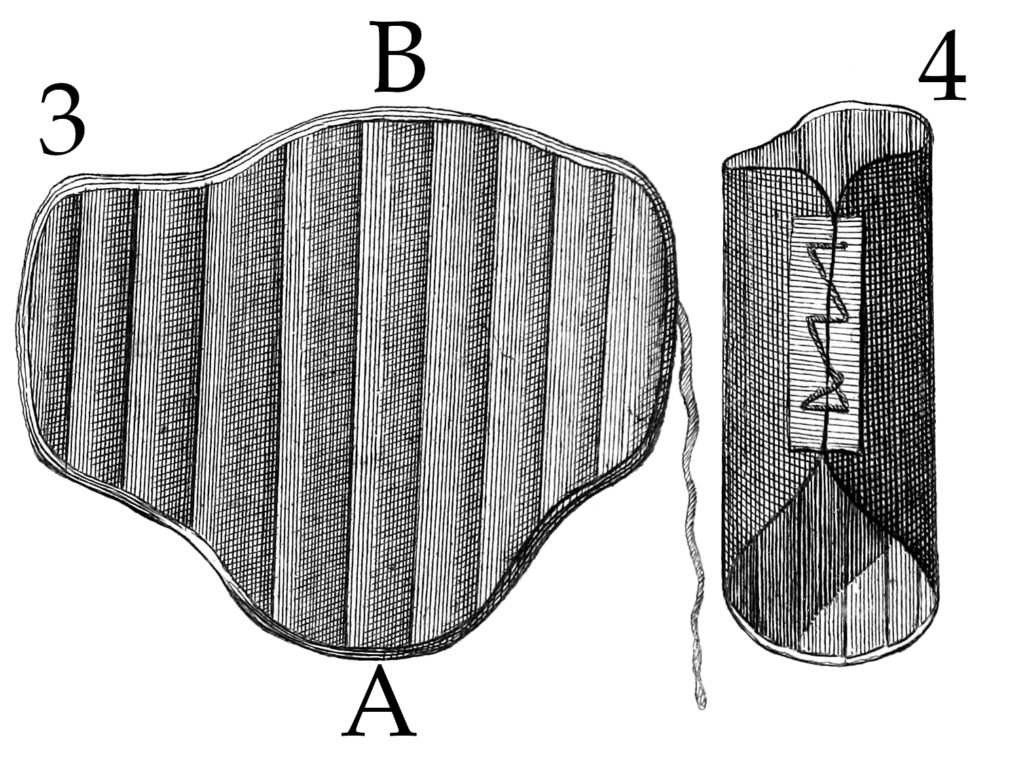
468. A bracelet of leather is equally necessary, its interior lined with a cushion, basted lengthwise, and adorned on the outside with a double weight of suede, designed to adjust to the arm by means of a thong. This instrument is used on the right arm to defend the part of it from the wrist to the elbow. Its purpose is to give the teacher a means, without damage, to accustom his students to execute blows of the edge and counter edge directed to a part so moveable.
469. It also serves for fights with blunted swords, since these should not be done with a view to offend but of exercise. Figure 3 shows an open bracelet so that you can note its shape and stitching. The letter A corresponds to the part of the elbow, and B to that of the wrist. Figure 4 shows it closed so that one can see how it looks when laced. Not that it is loose on the arm since this thickens in the fight and excessive compression would torment it.
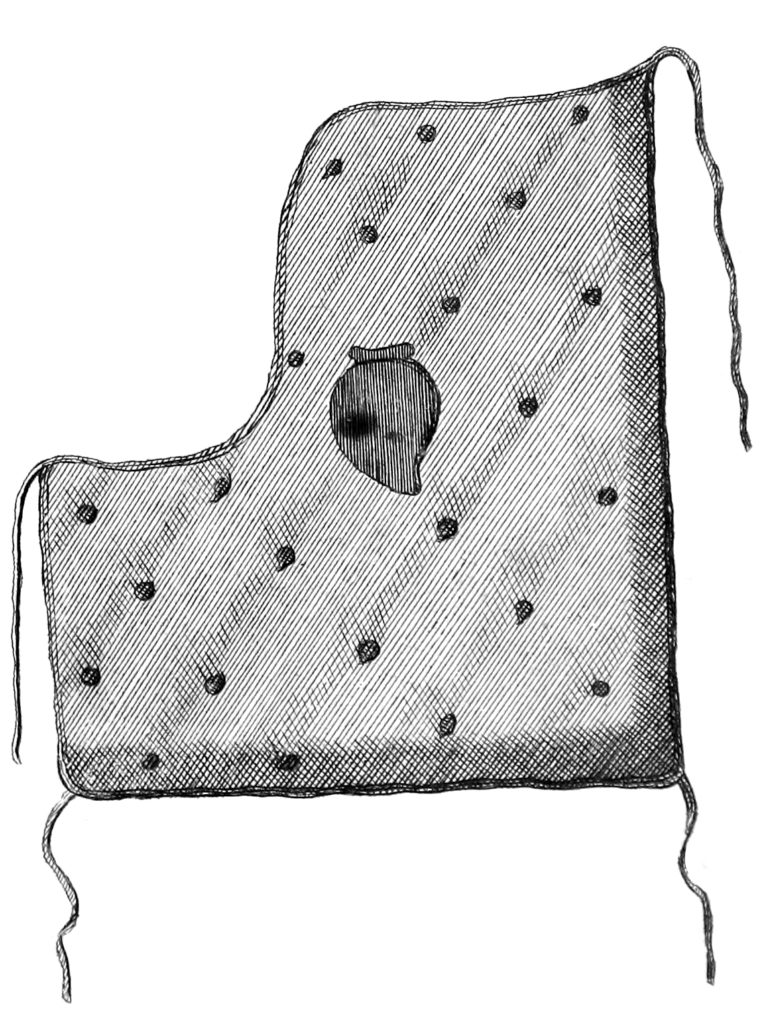
470. The teacher will also be served with a plastron or breastplate of sued, lined with linen, full of wool or bristle, and basted as shown in figure 5, so that by means of tapes that are shown, it will conform to the chest and, in this way, the students will be permitted to adjust their thrusts to all the times that are sufficient for their wrists to become accustomed to lead the point wisely where it is sent.
471. To take a lesson, the students must have some shoes of gazelle or suede, with the sole in reverse of what is commonly used, that is to say, with the meat to the outside. The cut of these will be high and with tabs for buckling. Its resilience will be immune from compression and the sole will prevent them from sliding in the compasses. They should make use likewise, both the master and the student, of a hat, both for the lesson and for fighting, since otherwise they could in this easily hurt themselves in the execution of a successful cut. For, although these should be thrown, in friendly demonstrations, with utmost restraint, holding the weapon so it doesn’t reach, it is, however, very easy for it to sometimes be difficult to contain. When the master teaches how to throw the cuts and reverses, they must be repaired with the removal, in order to accustom the student to executing with knowledge and attention to the removal, with agility, and successfully to the point to be addressed.
The End.

